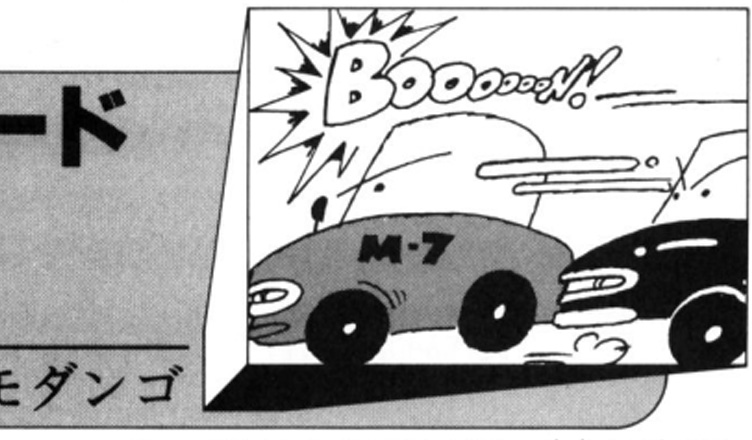Title – Crash Road
System – Sord M5 (BASIC-G Cartridge)
Author – TomoDango
Publication – December 1983 issue of Micom Basic Magazine
Page Scans – 1 2 3 4
Preserved By – Redfly
Recommended Emulator – MAME
Loading the Game –
Run the machine with the BASIC-G cartridge attached;
Load either the the .cas or .wav file;
Type CHAIN and press Enter;
The game should start automatically. If it doesn’t, press Esc.
Game Instructions –
The reason I created this program was because I was moved by Namco’s pole position… They have 7 CPUs and 1 M5, but they won’t lose!
About Program –
It’s a little long, but it’s a bit long, but I’ll give it a try because it casts a shadow on your car and the enemy’s car (not the stupid ones), makes it look like the enemy is getting closer and closer, and is elaborate on the sounds and demos. Please take a look. The background is also made in 3D, so please take a close look.
How to play –
Use the {-, -} key to move the car left or right, avoid the enemy cars (look like Starwars Tie fighters).
It’s amazing if you get over 1,000 points!
Chatting –
M5 is amazing! It’s fast, 16 colors, sounds, 4 interrupts, etc. (oh yeah, this program also uses EVENT). Well, anyway, it would be a waste to use the M5 with only the BASIC-I! It’s no match for other computers! Sorry for the mess.
Preserver’s add –
In this issue of Micom Basic Magazine, a bug was in the program list causing the background screen to remain stationary. Upon investigation, it was revealed that there was an issue with the basic code responsible for controlling the background screen movement. To rectify this, adjustments were made using ASCII characters ranging from 240 to 248, allowing the background screen to move as author intended.
However, an unintended consequence arose due to a misordering of the ASCII characters. Instead of moving in the desired direction, the background screen moved in the opposite direction. Editing code on a retro computer posed its challenges, making it cumbersome to modify and re-enter the code. Instead, a workaround was employed by slightly modifying the code segment responsible for creating the movement, located between lines 1020 and 1070, to ensure the desired direction of movement.
I finished tweaking the code, but my spirits sank when I discovered that the next edition of Micom Basic Magazine featured an article correcting the erroneous code.







